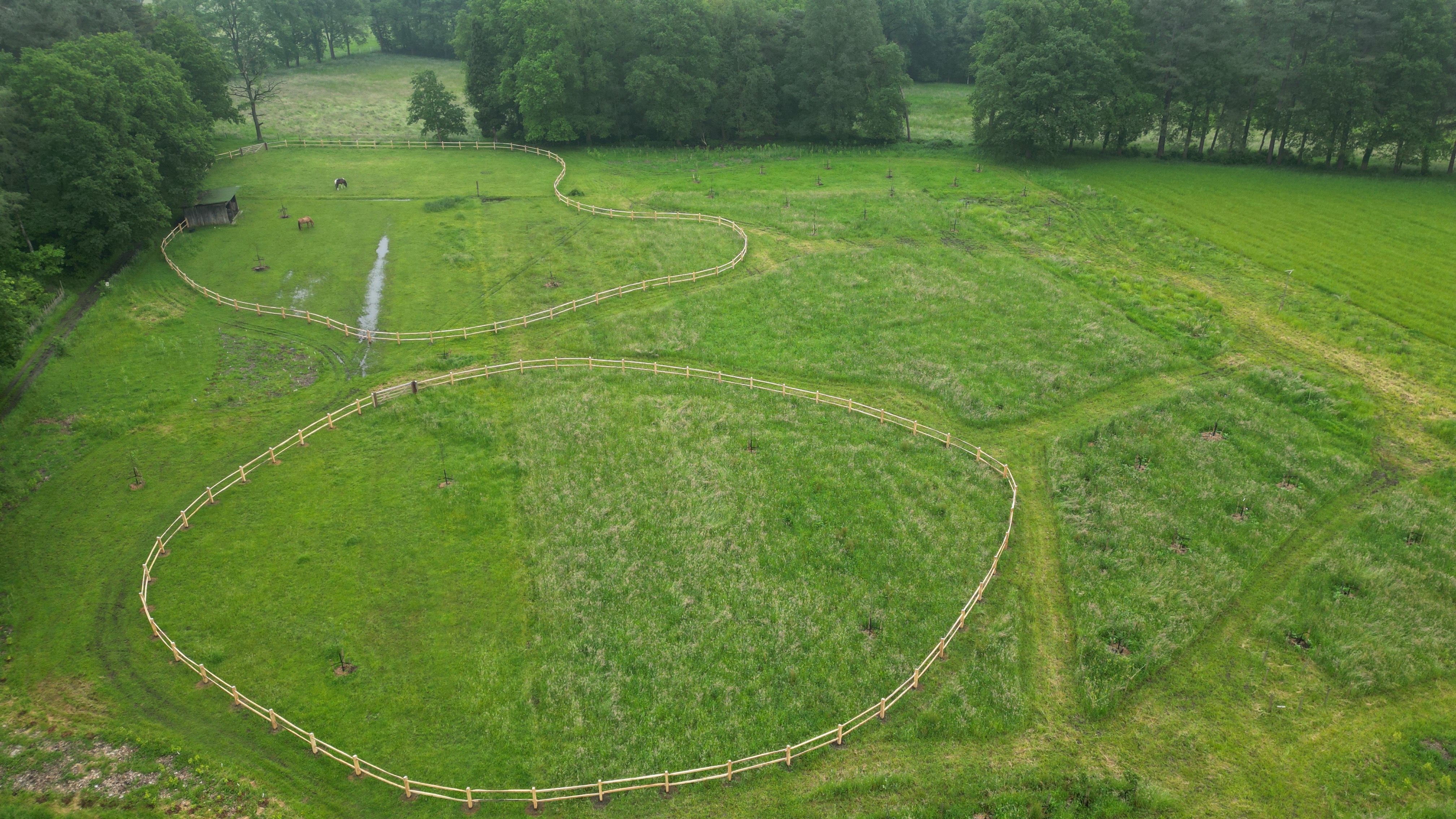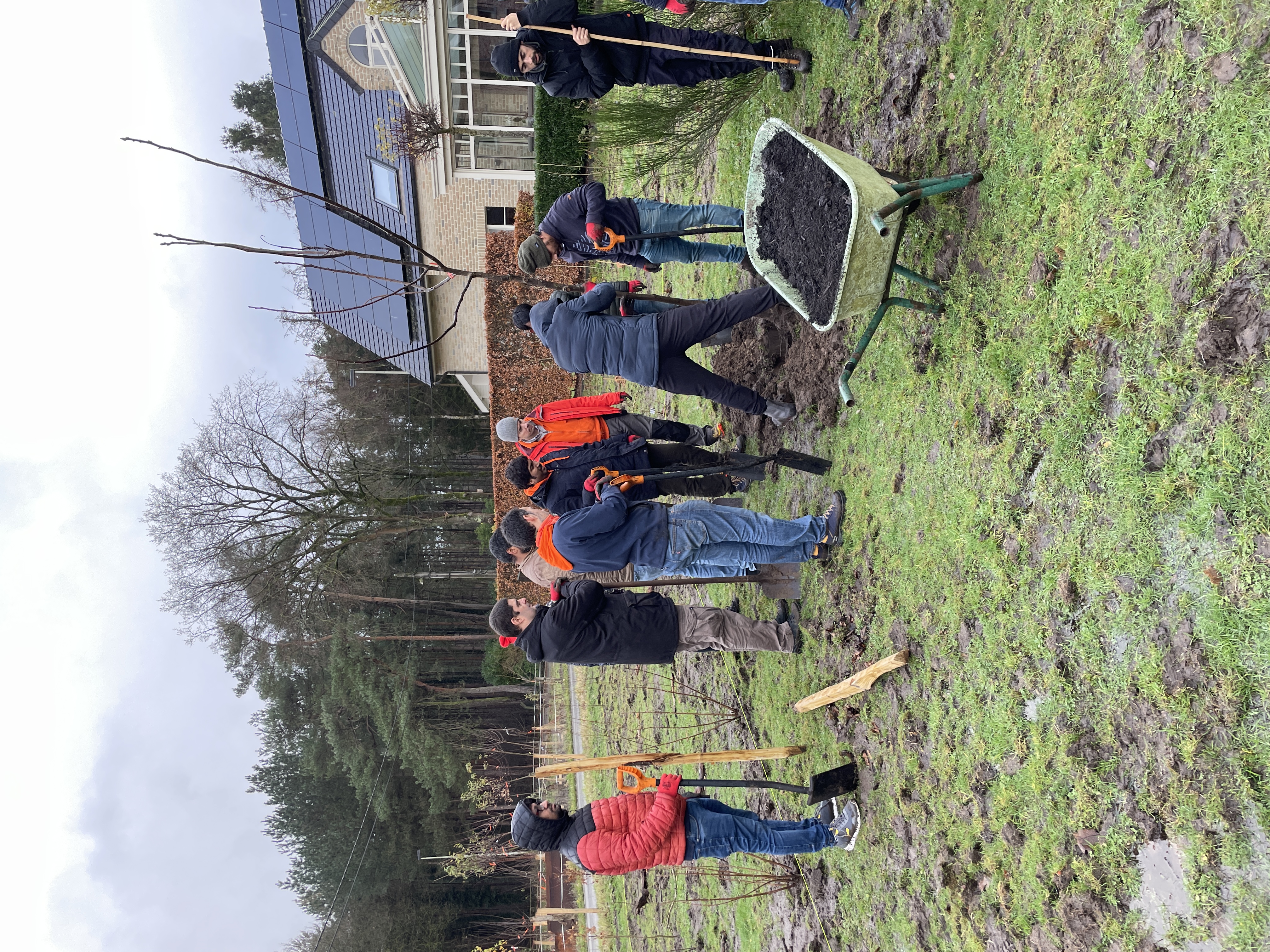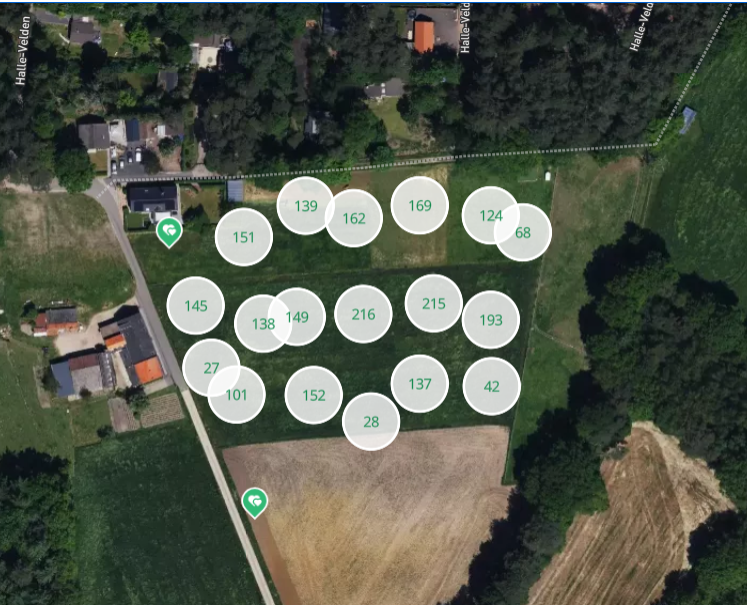Food Forest Zoersel
Geert & Goele had a dream to one day leave their busy jobs and become sustainable farmers. They are both concerned with the environmental impact of conventional agricultre and had studied and visited several food forests for inspiration. Spurred by the Covid-pandemic they accelerated their search for a plot and found a 5ha plot with an old farm close to Antwerp. This was their opportunity to turn their dream into a reality!
A food forest is a diverse, multi-layered agroecosystem designed to mimic the structure and function of a natural forest. It can incorporate a variety of edible plants, trees, fruit trees and shrubs. The plants are arranged in vertical layers to maximize productivity and biodiversity, while minimizing the need for external inputs like fertilizers and pesticides.
Food forests can provide a diverse array of edible crops throughout the year, creating a sustainable and resilient source of food.





The plot had always been producing corn and cereals in the conventional way, so in the first year cover crops were sown to help regenerate the soil. In the meantime and together with the regenerative landscape experts of Commensalist a holistic design was made with multiple layers to take maximum advantage of the sun. Fast growing species were located on the edges where the predominant wind comes in to help prevent erosion. Another focus was the layout, to make it attractive for visitors (especially schools) to walk around and learn about the project and its multiple dimensions. Although almost all species are perennial, a special zone was created to grow vegetables, sheltered by trees.
Finally, Life Terra came in to support the purchase of trees & shrubs as well as arrange for volunteers during several planting events. We are grateful to ClimatePartner and ING Belgium for their energy and financial support to make this important project a reality.





Plot and tree information
Zoersel is located in the region of Flanders, Belgium. Its climate is influenced by its proximity to the North Sea, with mild summers and cool winters. This region experiences a fairly consistent distribution of rainfall throughout the year, with occasional snowfall in the colder months.
The community's dedication to sustainability is palpable, with initiatives ranging from extensive tree planting programs, preservation of natural habitats for endangered species and community climate awareness initiative, such as this food forest.
Food forests can offer multiple benefits to the neighbourhood:
Access to Fresh, Nutritious Food: Food forests provide a sustainable source of fresh fruits, vegetables, herbs, and nuts, promoting local food security and reducing reliance on long-distance transportation.
Environmental Benefits: Theyey promote biodiversity by providing habitat for various plant and animal species. They also help improve air and soil quality, reduce erosion, and mitigate climate change by sequestering carbon dioxide.
Community Engagement and Education: Food forests offer opportunities for community involvement in gardening, planting, and harvesting activities. They can serve as educational spaces where people learn about sustainable agriculture, permaculture principles, and the importance of biodiversity.
Health and Well-being: Access to green spaces like food forests can improve mental and physical health by providing opportunities for outdoor recreation, exercise, and relaxation.

Tree species
The Zoersel food forest contains more than 30 local and native species, mixing trees, fruit trees, flowers and shrubs.
The aim of this food forest is to build a green space that will help to boost biodiversity, attract pollinators and local fauna while also promoting food security. It will also be a space to strengthen community bonds and raise awareness about the importance of environmental care.
These are some of the species we planted:

Check more information here:
And also more information can be found in the Zoersel Food forest Tree Dashboard: